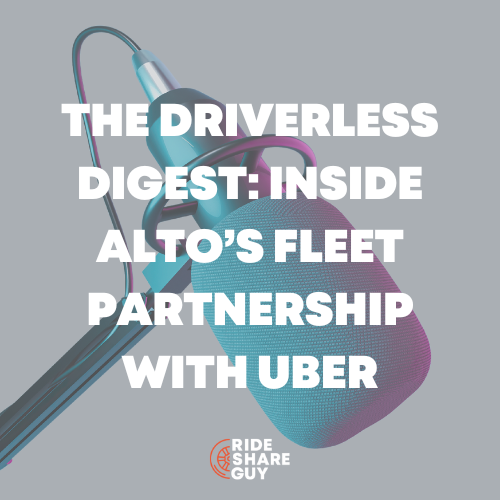In this episode, Harry sits down with Hansu Kim, Chairman of Flywheel Technologies, to explore how the long-running tension between taxis and rideshare has unexpectedly evolved into one of the most important partnerships in the industry. Hansu explains why Uber now relies heavily on taxis to meet demand, how new regulatory changes made this integration possible, and why taxi fleets are experiencing a massive rebound after years of decline.
From real numbers on Flywheel’s fleet utilization to the economics behind referred Uber trips, Hansu reveals how this “coalesced supply” model works — and why it’s reshaping driver earnings, insurance liability, and the entire for-hire transportation ecosystem. The conversation also dives deep into autonomous vehicles (AVs), Waymo’s expansion, and the specific challenges AVs face in cities like San Francisco.
Listen to The Rideshare Guy With Hansu Kim
Check us out on Apple Podcasts or Spotify! While you’re there, hit subscribe so you don’t miss our latest episodes!
Quick Takeaways
- Uber’s partnership with Flywheel now matches UberX riders to taxis automatically when a cab is closer. Riders see the same price and in-app experience, which is why about 99% accept the taxi match.
- In San Francisco, roughly half of all taxi trips in Flywheel’s fleet now come from Uber referrals, with the other half from street hails, airport trips, and the Flywheel app.
- When Uber routes a trip to a taxi, the ride becomes a taxi ride — meaning taxi insurance applies, the driver remains an independent contractor under taxi rules, and Uber takes a lower take rate while reducing liability.
- Taxi drivers are earning more than ever because they now receive both Uber’s massive demand and traditional taxi demand. Many Uber drivers are even switching to taxis to earn more.
- Taxi fleets that once resisted technology are now fully embracing e-hailing, and even Flywheel’s competitors use its platform to receive Uber-referred trips.
- Taxis offer unique advantages: ability to use transit-only lanes, deeper local knowledge, stricter background checks, and mandatory wheelchair-accessible vehicles in many cities.
- AV players like Waymo increasingly want to partner with taxi fleets, especially for disability rides and assisted-boarding trips that autonomous vehicles cannot handle alone.
- Flywheel is expanding internationally, including a major project to modernize tens of thousands of taxis in Mexico to serve Uber demand ahead of the World Cup.
- Hansu predicts the next few years will bring even more integration between taxis and rideshare, while AVs will remain limited by safety, weather, cost, and operational challenges.
- Hansu Kim on LinkedIn: https://www.linkedin.com/in/hansu-kim-b6b30b2/
Watch The Podcast On YouTube
Watch our YouTube episode. While you’re there, hit subscribe!





